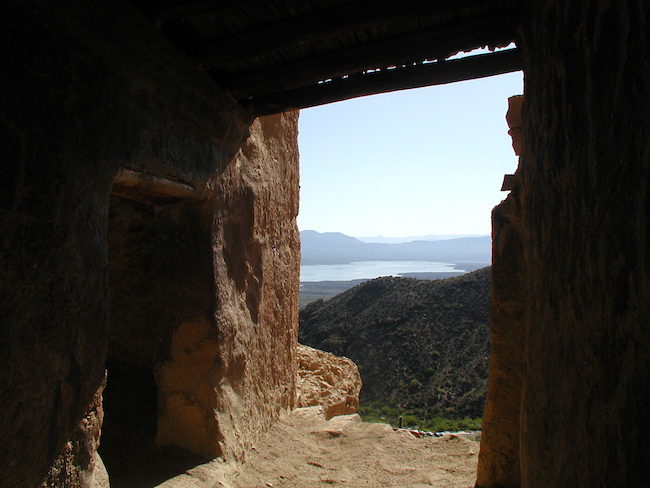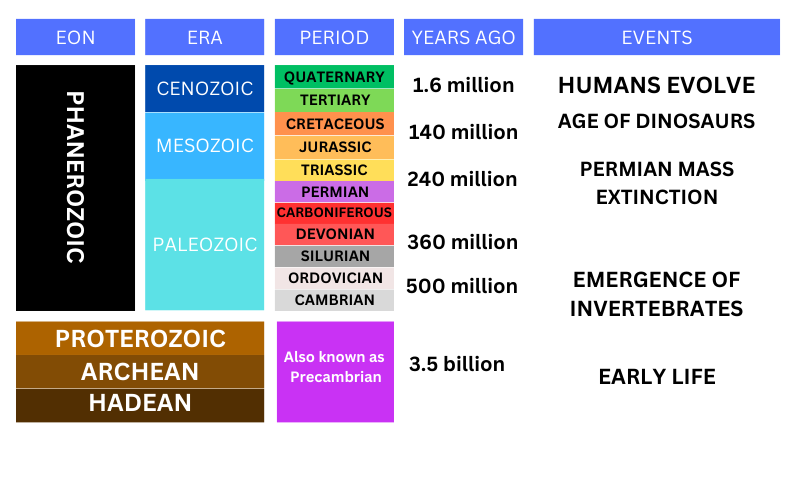Proterozoic Era
 |
| Proterozoic Rock Formations in Colorado |
Image Credit: National Park Service - Public Domain |
The Proterozoic Era, spanning approximately 2.5 billion to 541 million years ago, represents a crucial chapter in Earth's history, marked by significant geological, environmental, and biological transformations. This eon witnessed the emergence of complex life forms, the shaping of diverse landscapes, and the evolution of our planet toward conditions more akin to the modern Earth.
Major Divisions of the Proterozoic:
The Proterozoic Era is divided into three major subdivisions: the Paleoproterozoic, the Mesoproterozoic, and the Neoproterozoic. Each subdivision is characterized by distinct geological and biological events that collectively shaped the trajectory of Earth's evolution.
-
Paleoproterozoic (2.5 billion to 1.6 billion years ago): This period witnessed the continuation of the development of continental landmasses. The emergence of stable cratons—large, rigid areas of the Earth's crust—laid the groundwork for the formation of continents. The atmosphere continued to evolve, with rising oxygen levels influencing the chemistry of Earth's oceans.
-
Mesoproterozoic (1.6 billion to 1 billion years ago): During this era, the supercontinent Rodinia began to assemble, bringing together various continental blocks. The Mesoproterozoic is also marked by the widespread occurrence of a phenomenon known as "Snowball Earth," where the planet experienced severe glaciations, possibly leading to global ice cover.
-
Neoproterozoic (1 billion to 541 million years ago): The Neoproterozoic witnessed the breakup of Rodinia and the subsequent assembly of the supercontinent Pannotia. This era is also notable for the emergence of complex multicellular life forms, including the first animals. Ediacaran biota, a diverse assemblage of soft-bodied organisms, left a lasting imprint in the fossil record during this time.
Biological Evolution:
The Proterozoic Era is a crucial period in the evolution of life on Earth. While the Precambrian eons before the Proterozoic saw the emergence of simple life forms, the Proterozoic is marked by the diversification and complexity of organisms.
-
Eukaryotic Cells: The evolution of eukaryotic cells, characterized by membrane-bound organelles, occurred during the Proterozoic. This was a fundamental step toward the development of more complex life forms.
-
Acritarchs: Microscopic, organic-walled microfossils known as acritarchs appear abundantly in Proterozoic sedimentary rocks, providing valuable clues about the diversity of early protists.
-
Ediacaran Biota: The end of the Proterozoic witnessed the emergence of the Ediacaran biota, a diverse collection of soft-bodied organisms that thrived in marine environments. Though their precise relationships to modern organisms remain uncertain, these early forms represent a crucial step in the evolution of complex life.
Geological Processes:
The Proterozoic Era was characterized by dynamic geological processes that shaped the Earth's surface. From the assembly and breakup of supercontinents to periods of intense glaciations, the Proterozoic played a crucial role in sculpting the planet we recognize today.
